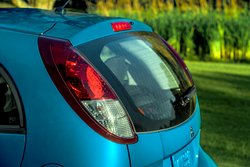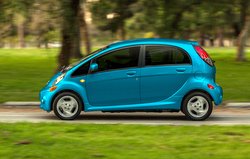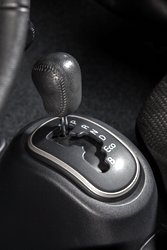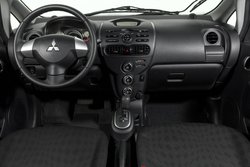(Electric) Power to the People!
The Mitsubishi i-MiEV is the least expensive all-electric car you can buy in the U.S. Enticing lease programs on other electric cars have made that less of a value proposition these days, but the little battery-powered car has its own charms.

I recently spent a gasoline-free week with a 2016 i-MiEV, and it wasn’t much different from the 2012 model I tested years ago. It’s shaped like an egg, with no hood to speak of, a tall, rounded roofline, and a little hatchback in the rear. You could call it cute; it stands out on the road both from its looks and its rarity.
Driving any all-electric vehicle efficiently depends on your behavior. In a gasoline car, the speedometer and gas gauge are for information—you don’t worry about them. With an electric, especially with an estimated EPA range of just 62 miles, you watch your range gauge like a hawk. And you monitor your driving by keeping an eye on the meter that shows if you’re generating power from coasting and braking—or if you’re discharging the battery by accelerating. How hard you push which pedals makes a big difference.
Using the air conditioning impacts range, too, so I kept the windows open and the dial to “Off” much of the time. Switching the AC on took around 8 miles out of the range estimate, and I wanted to keep some reserve.
Worked for My Commute
With an 18-mile commute in each direction, I had plenty of range with the i-MiEV. For the first time ever, I work at a company with six charging stations right out front, so I charged up at work instead of home. That’s good, not only for convenience, but because the at-work chargers are Level 2, meaning they are 240 volts and take about seven hours for a full charge. I only needed a partial charge, so I was done by lunchtime, and moved aside to let someone else use the ChargePoint charger.
The i-MiEV has a second charging jack for the Level 3 CHAdeMO quick charger, which I didn’t use, but it can fill the battery to about 80 percent in just half an hour, if necessary. There are two different quick charge plug configurations, though, so beware. Charging at home on standard household current (Level 1) takes a long time, so if you owned or leased one of these cars, you’d definitely want to install the 240-volt Level 2 charger in your garage.
A Toy Car Squeak

The i-MiEV suffers somewhat in comparison to both electrified “regular” cars, like the Honda Fit and Ford Focus, and cars designed only as electrics, such as the Nissan Leaf. Its interior panels are all hard plastic. Its aesthetic is somewhat Spartan. The sunvisors are squishy and the steering wheel doesn’t adjust. There’s no keyless entry. A few controls are located in oddball spots, almost like afterthoughts. The turn signals make a toy car squeak.

But a funny thing happened to me when I drove my Aqua Marine Blue Metallic test car. It felt solid on the road, and although there was only 66 horsepower, there was a robust 145 lb.-ft. of torque on tap. The little 2,579-pound bug zipped up to freeway speeds in a jiffy. Credit this to the way electric motors deliver 100 percent of their torque at any speed. A one-speed transmission gets the job done, as in other electrics.
The silence and remarkably balanced handling were a pleasure to commute to, and the standard 100-watt, six-speaker audio system isn’t bad. Visibility is great from the big windows, and the windows drop towards the front of the car, so you can see the road well.
Unfortunately, this little electric car’s range isn’t enough to do much more than commute and run errands around town—and I did lots of that, happily. However, even for a visit to San Jose—a normally no-brainer drive—I left the i-MiEV at home and took our gas-powered family car. Certainly a 160-mile round trip to visit the grandkids would be out of the question.
A Quirk on the Dash

Curiously, the i-MiEV had a feature in the dash screen that shows you where the closest gas stations were—with prices (which turned out to be inaccurate). Of course, I never needed that information.
Priced at just $22,995, the i-MiEV undercuts the other electrics (except for the very expensive Tesla) by around $10,000. Figure in the $7,500 Federal Tax Credit, and the i-MiEV becomes a real bargain. I used around $2.00 worth of electricity a day to drive 36 miles. That would have been around $8.00 in a normal, 18-mpg gasoline car.
The Mitsubishi i-MiEV is not only different from ordinary cars—it looks and feels different from other electric cars, too. It’s a unique and very ecologically minded alternative.
Related Stories You Might Enjoy:
Road Test: 2016 Fiat 500e
Road Test: 2016 Kia Soul EV
Road Test: 2016 Nissan Leaf
Road Test: 2014 Ford Focus Electric
Road Test: 2014 Volkswagen e-Golf
Disclosure:
Clean Fleet Report is loaned free test vehicles from automakers to evaluate, typically for a week at a time. Our road tests are based on this one-week drive of a new vehicle. Because of this we don’t address issues such as long-term reliability or total cost of ownership. In addition we are often invited to manufacturer events highlighting new vehicles or technology. As part of these events we may be offered free transportation, lodging or meals. We do our best to present our unvarnished evaluations of vehicles and news irrespective of these inducements.
Our focus is on vehicles that offer the best fuel economy in their class. We also feature those that are among the top mpg vehicles in their class. In addition, we aim to offer reviews and news on advanced technology and the alternative fuel vehicle market. We welcome any feedback from vehicle owners and are dedicated to providing a forum for alternative viewpoints. Please let us know your views at publisher@cleanfleetreport.com.

2 thoughts on “Road Test: 2016 Mitsubishi i-MiEV”